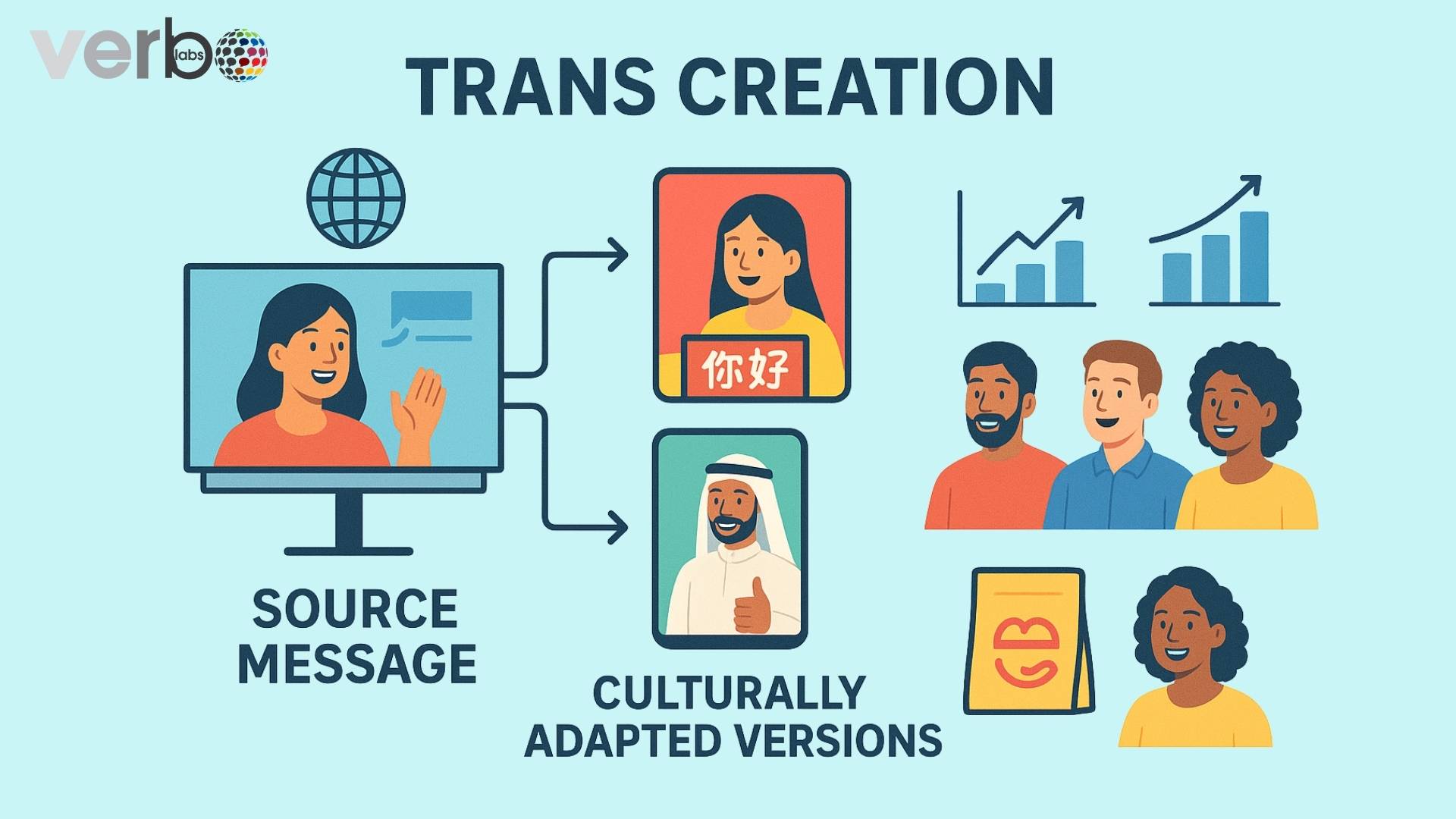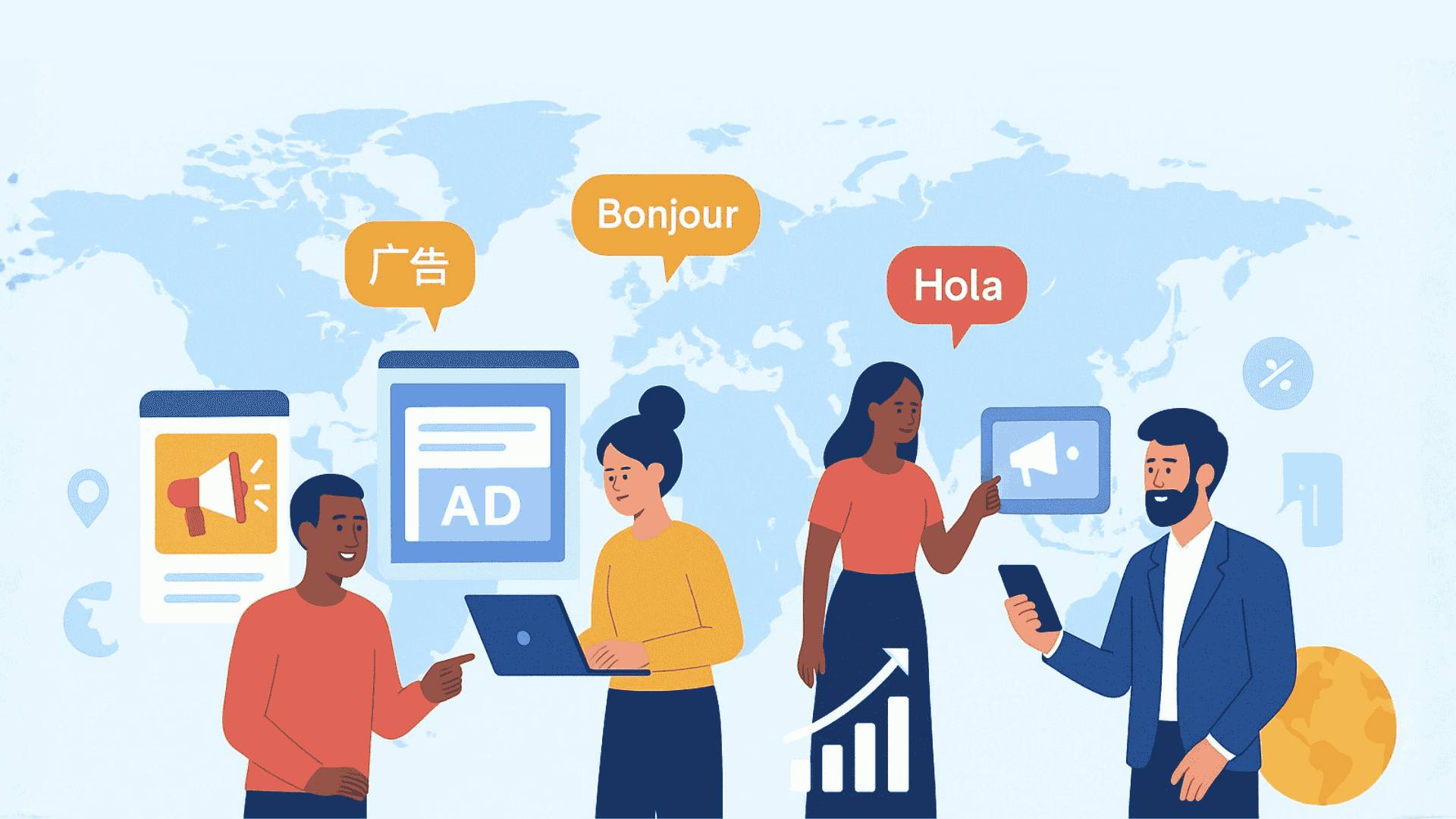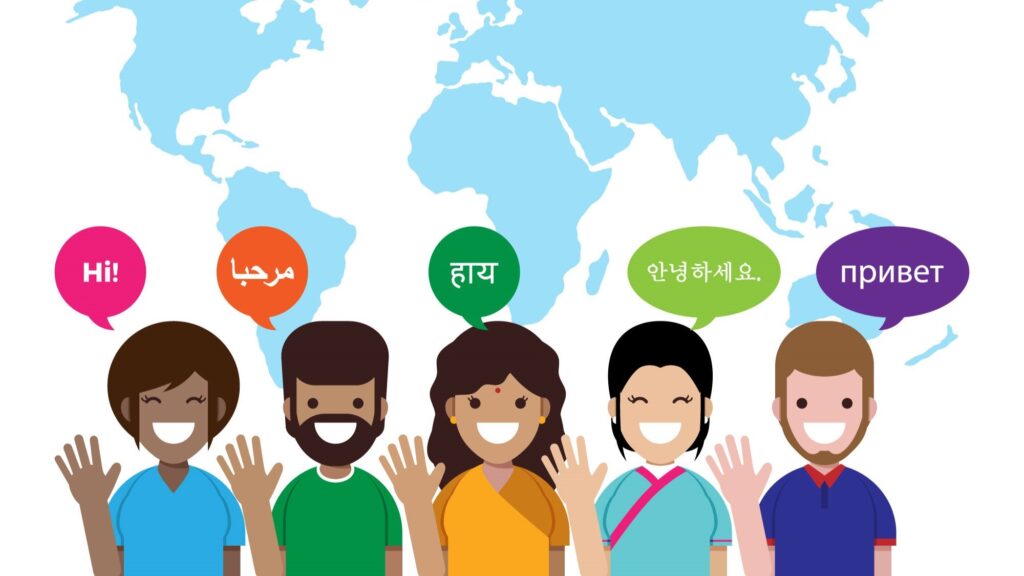
In today’s globally connected business landscape, companies face the critical challenge of effectively communicating their brand message across diverse cultural and linguistic boundaries. While translation serves as a fundamental tool for converting text from one language to another, transcreation emerges as a more sophisticated approach that goes beyond literal conversion to create culturally resonant and emotionally engaging content.
Understanding the distinction between these two methodologies is essential for businesses seeking to expand internationally and connect authentically with their target audiences.
What is Translation?
Translation is the process of converting written text from one language (source language) to another language (target language) while maintaining the original meaning, context, and intent. Professional translators focus primarily on linguistic accuracy, ensuring that the message is communicated clearly and grammatically correctly in the target language. Translation prioritizes fidelity to the source text, with translators working meticulously to find equivalent words, phrases, and sentences that preserve semantic meaning.
The primary purpose of translation is to make content accessible to a wider audience while maintaining precision and accuracy. This approach is particularly crucial for documents where exactness is paramount, such as legal contracts, technical manuals, scientific papers, and instructional materials. Translators may consider some cultural nuances, but their primary goal remains linguistic and semantic fidelity, often at the expense of extensive cultural adaptation. This process is typically applied to:
- Legal documents
- Technical manuals
- Websites
- Medical reports
- Academic papers
The primary goal is to provide a precise and faithful rendition of the source text, focusing on accuracy over creativity.
What is Transcreation?
Transcreation, a blend of “translation” and “creation,” goes beyond literal translation. Transcreation, a portmanteau of “translation” and “creation,” represents a creative process that combines translation with copywriting and content creation. Unlike traditional translation, transcreation allows significant deviation from the source text to ensure the adapted content resonates emotionally and culturally with the target audience. The transcreator acts more like a creative writer than a literal translator, sometimes extensively reworking the text to align with cultural preferences, values, and emotional triggers of the target market.
The fundamental goal of transcreation is to evoke the same emotional response and connection in the target audience as the original content produces in its native context. This process requires transcreators to possess deep cultural expertise, creative writing abilities, and an intimate understanding of local market dynamics. Transcreation prioritizes the preservation of intent, tone, and emotional impact over word-for-word accuracy. Transcreation is often used for:
- Marketing campaigns
- Advertisements
- Taglines and slogans
- Website content
- Video scripts
This approach requires creative rewriting, ensuring that cultural nuances and brand voice align with the target audience.
Key Differences Between Transcreation and Translation

There are several key differences between transcreation and translation, few of them are listed below:
Purpose and Focus
Translation maintains original meaning and focuses on linguistic accuracy, making it ideal for informational and instructional content. Transcreation adapts content for cultural and emotional resonance, prioritizing the recreation of feelings and responses rather than literal meaning.
Creative Freedom
Translation adheres closely to the source text structure and content, with limited creative liberty. Transcreation allows extensive creative freedom, enabling complete reimagining of content while maintaining brand voice and strategic objectives.
Process and Methodology
Translation begins with the source text and focuses on finding linguistic equivalents. Transcreation often starts with a creative brief outlining campaign goals, target demographics, and desired emotional outcomes, similar to what would be provided to a native copywriter.
Skills Required
Translators typically possess academic qualifications, professional accreditation, and specialized subject matter expertise. Transcreators are usually native-speaking copywriters with a strong command of source languages, cultural understanding, and creative writing capabilities.
Content Types
Translation works best for technical documentation, legal texts, user manuals, and informational content. Transcreation excels with marketing materials, advertising campaigns, slogans, taglines, and creative content where emotional connection is crucial.
Pricing Structure
Translation is commonly priced per word, typically ranging from $0.15 to $0.30 per word in the United States. Transcreation is usually charged hourly, with rates ranging from $35 to $100 per hour, reflecting the creative effort and cultural expertise required.
| Aspect | Translation | Transcreation |
| Purpose | Converts text accurately | Adapts text creatively |
| Focus | Language and meaning | The cultural and emotional impact |
| Use Case | Legal, technical, and academic content | Marketing, branding, advertising content |
| Creativity | Minimal | High |
| Process | Word-for-word conversion | Rewriting while maintaining intent |
When to Choose Transcreation Over Translation

Opt for transcreation when: Choose Translation For:
- Technical manuals and documentation
- Legal contracts and official documents
- Academic and scientific papers
- User guides and instructional materials
- Informational website content
- Medical and regulatory documentation
Choose Transcreation For:
- Marketing campaigns and advertising
- Brand slogans and taglines
- Social media content
- Product names and branding
- Creative content requiring emotional impact
- Video game localization and entertainment
Real-World Examples of Transcreation Success
McDonald’s Global Adaptation
McDonald’s famous “I’m Lovin’ It” slogan required transcreation for different markets. In China, it became “我就喜欢” (I just like it) because direct translation would have been culturally inappropriate, as Chinese verbs for love are considered too strong for food.
Coca-Cola’s “Share a Coke”
When Coca-Cola’s “Share a Coke” campaign initially failed in China due to naming conventions, the company transcreated the concept to print social labels like “Fashionista” and “Comedian” instead of personal names, making it culturally relevant.
Haribo’s Rhyming Success
Haribo’s German slogan “Haribo macht Kinder froh und Erwachsene ebenso!” was transcreated rather than translated to maintain the rhyming element across languages. The English version became “Kids and grown-ups love it so, the happy world of Haribo!” preserving both meaning and musical quality.
Why Choosing the Right Approach Matters
Selecting the appropriate method ensures effective communication and preserves brand identity. While translation offers clarity and precision, transcreation ensures content connects emotionally and culturally with the target audience.
The Transcreation Process
Step 1: Market Research and Cultural Analysis
Understanding the target audience’s demographics, cultural values, language preferences, and local market dynamics.
Step 2: Creative Briefing
Developing comprehensive briefs that include campaign objectives, brand guidelines, target audience insights, and desired emotional outcomes.
Step 3: Content Adaptation
Creative reworking of messaging, imagery, and strategy to maximize effectiveness in the target market while maintaining brand consistency.
Step 4: Cultural Validation
Testing adapted content with local focus groups and cultural consultants to ensure appropriateness and effectiveness.
Step 5: Implementation and Optimization
Rolling out transcreated content and monitoring performance metrics to measure cultural resonance and business impact.
Benefits of Transcreation

Enhanced Cultural Connection
Transcreation ensures content feels native to the target culture, building trust and emotional connection with local audiences.
Improved Brand Perception
Culturally adapted content demonstrates respect for local customs and values, enhancing brand image and acceptance.
Increased Engagement and Conversion
Research shows localized and culturally-aware campaigns achieve higher engagement rates and conversion rates compared to direct translations.
Risk Mitigation
Proper transcreation helps avoid cultural missteps and offensive content that could damage brand reputation.
Competitive Advantage
Brands using effective transcreation can differentiate themselves from competitors using generic translations.
Challenges and Considerations
Higher Costs
Transcreation typically costs 30% more than standard translation due to the creative effort, cultural research, and specialized expertise required.
Longer Timelines
The transcreation process requires more time for research, creative development, and cultural validation compared to straightforward translation.
Quality Control
Ensuring consistency across multiple markets while maintaining local relevance requires careful project management and cultural expertise.
Measuring Success
Evaluating transcreation effectiveness requires tracking engagement metrics, brand sentiment, and conversion rates rather than just linguistic accuracy.
How VerboLabs Helps with Translation and Transcreation
At VerboLabs, we specialize in helping global businesses find the right balance between translation and transcreation.
- Our professional translation services deliver accuracy and precision for legal, medical, and technical documents.
- Our transcreation experts ensure that marketing campaigns, slogans, and creative assets resonate with local cultures while keeping your brand voice intact.
By combining linguistic expertise with creative adaptation, VerboLabs ensures your message isn’t just understood—it’s truly felt by your target audience.
Conclusion
In today’s globalized marketplace, choosing between translation and transcreation is more than a linguistic decision — it’s a strategic one. Translation ensures your message is communicated accurately and consistently, making it ideal for technical, legal, and informational content. Transcreation, however, goes a step further by adapting tone, emotion, and cultural context, which is vital for marketing, branding, and audience engagement.
For businesses aiming to expand internationally, a successful communication strategy often blends both approaches — using translation for clarity and precision while leveraging transcreation to forge deeper cultural connections. By understanding your audience’s expectations and tailoring your messaging accordingly, you can ensure your brand resonates across borders. Ultimately, investing in the right approach not only enhances global reach but also builds trust, relevance, and long-term customer loyalty in diverse markets.
Partnering with a professional agency like VerboLabs helps you deliver content that is not only understood but also embraced worldwide.

Need expert transcreation or translation? VerboLabs delivers high-quality language solutions. Contact us today to expand your global reach!
FAQs
Translation focuses on converting text accurately from one language to another while maintaining meaning, whereas transcreation recreates content to evoke the same emotional response and cultural resonance in the target audience, often involving significant creative changes.
Use transcreation for marketing materials, advertising campaigns, slogans, brand messaging, and any creative content where emotional connection and cultural relevance are crucial for success.
Yes, transcreation typically costs 30% more than standard translation, with hourly rates ranging from $35-100 compared to per-word translation rates of $0.15-0.30.
Transcreators need creative writing abilities, cultural expertise, native fluency in the target language, understanding of marketing psychology, and knowledge of local customs and preferences.
Transcreation takes longer than translation due to research, creative development, and cultural validation phases, but timelines vary based on project complexity and market requirements.
While AI can assist with basic translation tasks, transcreation requires human creativity, cultural understanding, and emotional intelligence that current AI technologies cannot fully replicate.
Localization focuses on adapting content for a specific region by addressing language, cultural references, date formats, currencies, and visuals. Transcreation, however, goes deeper by recreating the message itself to ensure it evokes the same emotional and cultural impact as the original. While localization ensures usability, transcreation ensures relatability.
Yes. For example, McDonald’s adapted its “I’m Lovin’ It” slogan differently in China, and Coca-Cola reimagined its “Share a Coke” campaign with traits instead of names. These cases show how brands use transcreation to connect emotionally with audiences beyond literal translation.
Look for agencies or freelancers with proven cultural expertise, creative writing skills, and experience in marketing campaigns. A strong provider will combine linguistic accuracy with copywriting talent, ensuring your brand voice resonates globally
Translation is usually priced per word ($0.15–$0.30 in the US). Transcreation is more creative and often billed hourly ($35–$100), reflecting the research, cultural analysis, and creative adaptation required.
Marketing translation adapts promotional content while maintaining brand messaging accuracy. Transcreation, by contrast, reimagines content to trigger the same emotions in a new culture. Marketing translation is about clarity, while transcreation is about connection.
Creative translation is often used as an alternative term for transcreation. Both involve rewriting content in a way that preserves intent and emotion, but transcreation typically allows greater freedom to reshape the message for cultural relevance.
Transcreation ensures that your global campaigns are not just understood but embraced by different cultures. By adapting slogans, ads, and brand messaging creatively, it becomes a key driver in international expansion and audience engagement.
Cultural adaptation means tailoring content to fit the values, norms, and expectations of a specific audience. It prevents cultural missteps, builds trust, and ensures your brand resonates authentically. Transcreation is one form of cultural adaptation, particularly useful in marketing.



